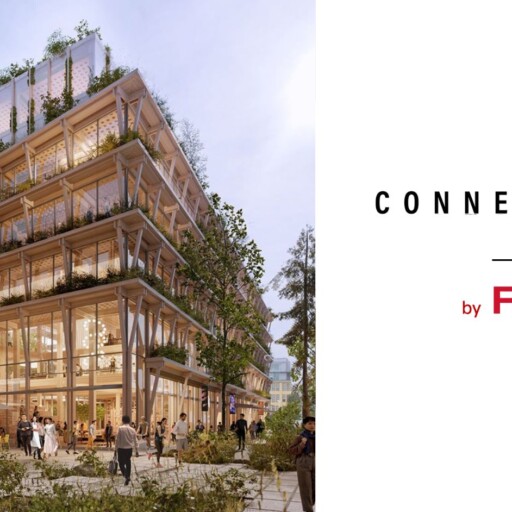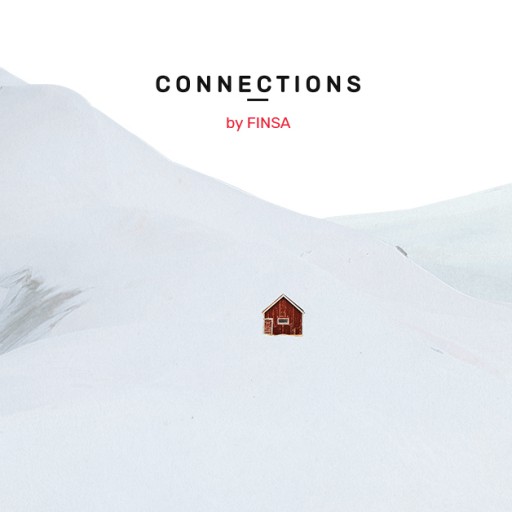Where do the materials used in exhibitions and major events like the Venice Architecture Biennale come from? It’s not always easy to trace its hints back to its origin, but thanks to the increasing importance given to the traceability of materials, little by little, there are more and more who not only allow this starting point to be known, but even promote it. This is how we can draw a line between the great Venetian exhibition and the Galician mountain communities.
What is the relationship? At the 19th edition of the Venice Biennale, held between May and November 2025, the wood used in the Spanish Pavilion came from three different farms, two of them from mountain communities (Antas, in A Lama, and San Breixo, in Barro, both in the province of Pontevedra). The third was the A Panda da Dá farm (As Pontes, A Coruña), owned by Finsa. The fact that the wood produced on these farms has been used for this purpose provides a fantastic opportunity to talk about the communal forest communities and their role in forest management and care.
Ver esta publicación en Instagram
What is a community of communal forests?
Commonly held forest communities are a type of collective property of Germanic origin, explains Xosé Covelo Míguez, director of the Galician Forestry Association (AFG). “It means that the mountain belongs to several people at the same time, but with a very important peculiarity: this ownership is not inherited, but is linked to the people living in that specific territorial location (a village, a parish). Its inhabitants have the right to participate in the management of the forest, but only as long as they reside there regularly,” he elaborates.
That is, if someone moves to a place where there is a forest community, they can, if they want (it is voluntary), become a community member. If you leave, you lose that right. “I like to say that it is the mountain that chooses who owns it. It is a property linked to the fact that these people have, as the old laws said, a house with smoke,” says Covelo Míguez. In state and regional legislation (in Galicia), it is indicated that these mountains are “ indivisible, inalienable, imprescriptible and non-seizable assets”.
Ver esta publicación en Instagram
Commonly owned forest communities are not exclusive to Galicia (they also exist in other areas of the northwest of the peninsula, such as Asturias and León), but the Galician region has the largest number of hectares of this type of forest. According to data from the Registry of communal lands, there are more than 3,000 forests classified as such in Galicia, covering a total of 664,000 hectares, one-fifth of the Galician territory. Of the remainder, more than one million hectares are private forests, and only about 53,000 are publicly owned. “This does contrast with the rest of Spain, where, except in the northwest, public forests are more prevalent,” says the director of the AFG.
The last name of this type of property, which states that these mountains are in common ownership, refers to that community both in terms of ownership and management of the mountain. “Decisions are made in assemblies, which are held at least once a year. That’s where the common hand comes into play. “We all decide what work we do and what we don’t, whether we want the forest to have a more productive focus, or one for environmental conservation, or social use, etc.,” Covelo Míguez exemplifies.
Decide the uses of the mountain
Returning to the mountain communities of Antas and San Breixo and their participation in the Venice Architecture Biennale, and knowing what we know now about how this type of property works, we can imagine how it all came about. In the respective assemblies of both communities, it was decided at one point to give the forest a productive use, to produce wood (not necessarily exclusively).
Communities of communally owned forests thus ensure that one of the greatest threats to forests, their abandonment, does not occur. Regarding possible uses, Xosé Covelo Míguez explains that it is common for all three to coexist (productive, environmental and social use), although perhaps giving greater priority to one of them.
Ver esta publicación en Instagram
The expert gives several examples. “The mountains around Vigo and some around A Coruña do very important work because they are highly focused on social use. There are forest trails for walking, paths, degraded areas are being restored to plant hardwood trees… It’s a recreational social use that occurs in the surrounding areas of cities or towns like Redondela or Rianxo,” he points out. Different management models sometimes provide other types of benefits. “For example, it creates jobs; you have local people working in the parish itself,” he explains. Or, in the case of their mountain community (Xinzo, in Ponteareas), they heat the cultural centre with wood that comes from the forest.
In other cases, the income that enters the community from various productive activities has an impact on the residents, as it is used to restore assets or for the maintenance (or construction) of sociocultural buildings. “For example, fixing something that has important symbolism in the parish, like the church or a cruceiro. Or some road, fountain, or other element that the residents in those assemblies consider essential,” he points out.
Ver esta publicación en Instagram
Finally, there is the work of environmental conservation. “Conservation of water, biodiversity, fauna, and flora, whether because they are part of the ‘Rede Natura’ or have some type of protection, or simply because they have good quality and high species diversity values that must be maintained,” he asserts.
We must not forget the environmental awareness that can be achieved through this type of property: although we tend to take greater care of our own land, the vast majority of these forests are open. “People can come in, enjoy it, pick chestnuts or mushrooms,” says Covelo Míguez, who also highlights that many mountain communities also organise outreach activities. Of course, people are also asked to “respect the mountains, to avoid misunderstanding social use, to not litter or ride motorcycles”.
The challenges of the future of local forest communities
The director of the Galician Forestry Association believes that, although forest communities are regulated by legislation, ” we must move with the times and update them“. One of the functions of the AFG (as well as the forest associations, the grouping of several communities) is to “leverage power”. “We, for example, provide support in the revision of regulations, in the defense of local forests in the face of new legislation that emerges, such as that on fires, or we ensure that, when the guidelines for aid are drafted, they include eligibility criteria so that they go to those who need them, so that society as a whole benefits and the forests are reached,” he explains. In addition, they provide technical support for the management of local forests.
Ver esta publicación en Instagram
As for the current challenges facing mountain communities that need to be addressed, one of the most important is the ageing of the population. “It is an image of the reality that exists in Galicia. We have an Atlantic strip with communities of 50 to 200 members, which are renewed every four years, making them dynamic and active. But inland there are villages that may only have five people in the community, or even none. Furthermore, they are older, so it’s a lot of work for a few people, people who often don’t have the digital training that’s now necessary,” he says.
In addition, he calls for legislation to recognise the importance of forest communities when it comes to, for example, preventing fires, but not to place the entire burden and responsibility for such prevention on them. “That expense, that annual cleaning of the secondary housing protection network, must be shared. “No other owner or the Administration can contribute”, he says.
It would also be necessary to help enhance ecosystem services. “This is carbon absorption, water resources, conservation of soil values, biodiversity, working to eradicate invasive species… We need to legislate to ensure there are compensations that allow for all of this. Legislation must be protective of communal forests, which must have the resources to do all of this”.
Common lands are a very peculiar type of property that has existed for several centuries (although they were not legally recognised until the second half of the 20th century). “We should ask that it be given greater importance and that new generations be informed of its existence in schools. It is a very typical figure of ours. And it works”, concludes Xosé Covelo Míguez. It resists because it works.




